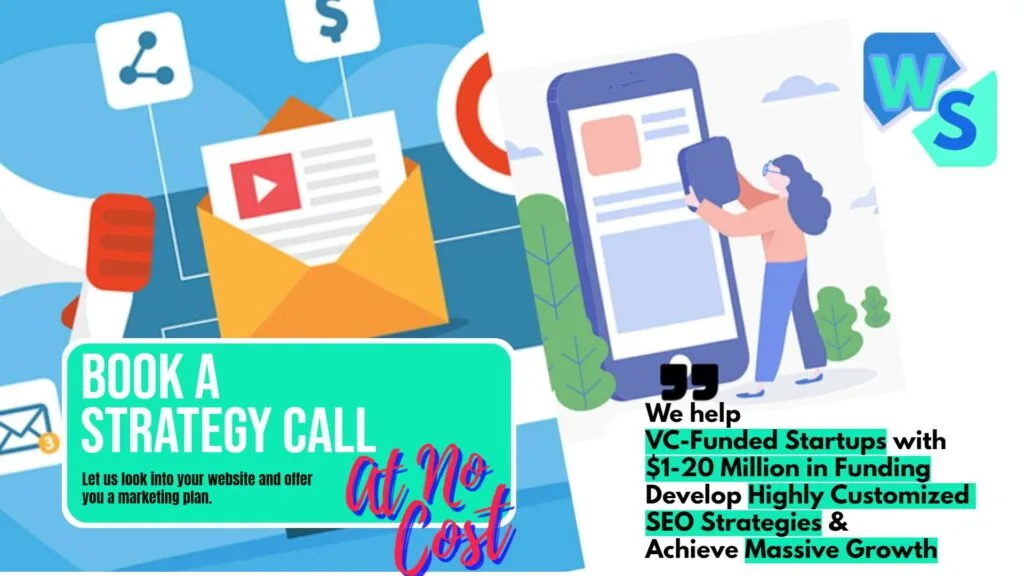This Article has been revised, edited and added to, by Poulomi Chakraborty.
- The Importance of CTAs in Travel Websites: Guiding Visitors from Dreaming to Booking
- Crafting CTAs That Resonate with Travelers: Tapping into the Traveler's Psyche
- Design Elements: Making Your CTAs Stand Out
- Personalization: Crafting CTAs Tailored to the User
- Optimizing for Mobile: Adapting CTAs for the Small Screen
- Using Social Proof to Boost CTA Efficacy
- Customer Testimonials: Voices of Experience
- User-Generated Content: Authentic Visual Proof
- Real-Time Stats: Creating Urgency & FOMO
- Ratings & Badges: Symbols of Trust
- Social Share Count: Popularity at a Glance
- Celebrity or Influencer Endorsements: The Power of Association
- Community and Forums: Engagement Beyond Bookings
- Harnessing the Power of Storytelling Through Customer Journeys
- Leveraging Expert Endorsements and Partnerships
- Innovative Use of Data and Technology for Personalized Social Proof
- Embedding Social Proof in Email Marketing Campaigns
- Elevating CTA Strategies with Advanced Social Proof Techniques
- A/B Testing: The Key to Perfecting Your CTAs
- Conclusion: Crafting the Perfect Journey with CTAs
In the competitive realm of online travel, enticing visuals and captivating descriptions can whisk users away to distant lands, but it’s the humble Call-to-Action (CTA) button that turns those dreams into reality. A CTA is more than just a clickable button; it’s the gateway between intention and action, between browsing and booking. In this article, we’ll journey through effective CTA strategies tailor-made for travel websites, ensuring not only clicks but conversions.
The Importance of CTAs in Travel Websites: Guiding Visitors from Dreaming to Booking

The magic of travel is undeniable. From sun-dappled beaches to bustling city centers, travel offers experiences that linger in memory long after the journey ends. Yet, in the digital age, the process of turning these dreams into a tangible itinerary falls heavily on the shoulders of CTAs. Within the vast expanse of travel websites, CTAs play multifaceted roles, each underscoring their paramount importance:
Conversion Drivers: The Heartbeat of Business Goals
- Landing the Sale: In essence, CTAs are the closing arguments of any digital pitch. They encapsulate the final push, urging users to finalize their choices, be it booking a flight, reserving a hotel, or purchasing a tour package.
- Quantifiable Metrics: Beyond driving actions, CTAs offer tangible metrics. By tracking clicks, conversions, and abandon rates, businesses can gauge campaign efficacy and make data-driven decisions.
Navigational Tools: The Compass of User Journey
- Streamlined User Experience: A well-placed CTA guides users, ensuring they don’t get lost amidst the plethora of information. By offering clear directions, CTAs simplify decision-making, streamlining the path from inquiry to action.
- Highlighting Priority Content: Not all content on a website holds equal importance. CTAs can draw attention to priority sections, be it seasonal promotions, new destinations, or customer testimonials.
Feedback Mechanisms: The Pulse Check of User Engagement
- Insight into User Behavior: By monitoring which CTAs garner attention and which ones go unnoticed, businesses can gain insights into user preferences. For instance, a CTA emphasizing eco-tourism might outperform another, indicating a rising trend in sustainable travel.
- Refinement & Optimization: Constantly analyzing CTA performance can aid in iterative refinement. A CTA that doesn’t resonate can be tweaked or replaced, ensuring that the website remains aligned with evolving user expectations.
Building Trust & Credibility: The Bridge of Assurance
- Setting Expectations: Clear and transparent CTAs, like “No Hidden Fees” or “Free Cancellation,” set forthright expectations, assuring users that they’re making a safe and informed choice.
- Reinforcing Brand Promise: CTAs also reflect a brand’s promise and identity. A luxury travel site might emphasize “Exclusivity,” while an adventure travel portal might focus on “Thrills Awaiting.”
Encouraging User Interactivity: The Spark of Engagement
- Interactive Elements: Beyond static buttons, CTAs can be designed as interactive elements like sliders, calculators (e.g., “Calculate Your Trip Cost”), or even quizzes (“Find Your Dream Destination”). Such CTAs engage users, making them invest time and attention, which often translates to higher conversion rates.
- Driving Other Engagements: Not all CTAs need to culminate in a sale. CTAs like “Join Our Newsletter” or “Follow Us for Travel Tips” drive secondary engagements, building a long-term relationship with users.
Crafting CTAs That Resonate with Travelers: Tapping into the Traveler’s Psyche

Travel, by its very nature, is a deeply personal and emotional experience. The allure of a new destination, the anticipation of an upcoming journey, or the sense of wonder invoked by breathtaking landscapes – these emotions fuel the desire to explore. To craft CTAs that truly resonate, it’s vital to align with these sentiments and speak to the heart of every potential traveler.
Evoke Urgency: Seizing the Moment
- The Power of FOMO: The Fear of Missing Out isn’t just a buzzword; it’s a potent psychological driver. By highlighting limited-time offers or availability, CTAs can harness FOMO to inspire action. Think of phrases like “Last Chance for Summer Discounts!” or “Only 2 Rooms Left!”
- Highlighting Seasonal Opportunities: Travel is often influenced by seasons. A CTA stating “Catch the Cherry Blossoms – Book Tokyo Now!” leverages the transient nature of such experiences, emphasizing the need for timely action.
Assure Value: Affirming the Traveler’s Choice
- Promising Financial Savings: Money saved on bookings often translates to more resources for experiences. CTAs like “Save 20% on Early Bird Bookings” or “Exclusive Member Discounts” emphasize the financial value proposition.
- Emphasizing Experiential Value: Beyond money, the value can also be about unique experiences. “Get a Complimentary Wine Tour with Your Stay” or “Exclusive Access to Hidden Trails” underscore unique experiences only your service offers.
Stir Curiosity: The Lure of the Unknown
- Showcasing Lesser-Known Gems: In an age where many seek off-the-beaten-path experiences, CTAs that highlight undiscovered or unique locales can be enticing. “Discover the Secret Beaches of Thailand” or “Embark on a Culinary Adventure in Morocco” can spark interest.
- Interactive Invitations: Instead of static statements, pose questions or challenges. CTAs like “Are You Ready for the World’s Highest Bungee Jump?” or “Can You Conquer the Sahara?” invoke intrigue and a touch of daring.
Tap into Aspirations: Dream Bigger
- Highlighting Luxury and Exclusivity: For a segment of travelers, the allure lies in exclusivity. CTAs that evoke luxury, such as “Experience VIP Tours of Paris” or “Upgrade to a Sea-View Suite,” cater to these aspirations.
- Inspiring Personal Growth: Travel often aligns with personal growth, be it learning, wellness, or overcoming challenges. CTAs like “Find Yourself in Bali’s Yoga Retreats” or “Master Italian Cooking in Tuscany” resonate with these transformative aspirations.
Emphasize Safety and Assurance: The Comfort of Reliability
- Reassurance in Uncertain Times: Especially relevant in a post-pandemic world, travelers seek safety assurances. CTAs like “COVID-Safe Properties” or “Flexible Cancellation Policies” address these concerns head-on.
- Testimonials and Validation: Incorporating social proof can boost trust. A CTA paired with “Chosen by 1,000+ Solo Travelers” or “Awarded the Safest Adventure Tours 2023” offers both directive and validation.

Related: Check out our free SEO suite

Design Elements: Making Your CTAs Stand Out
In a digital landscape crowded with content, visuals, and offers, your CTAs must not only resonate on an emotional level but also visually capture attention. The design of a CTA goes beyond mere aesthetics; it plays a crucial role in guiding user behavior and ensuring conversion. Here’s how you can infuse design principles to make your CTAs truly stand out:
Color Contrast: Commanding Attention
- Psychology of Colors: Different colors evoke different emotions. While blue may convey trust, red can signal urgency. Choose a color for your CTA that aligns with the emotion you want to evoke but also ensures it contrasts well with the background to pop out.
- Consistent Branding: While contrast is key, consistency with brand colors helps maintain a cohesive look. A CTA that seamlessly blends brand identity with prominence is a winner.
Size & Proportions: Striking the Right Balance
- Visible but Not Overpowering: A CTA should be large enough to be easily noticeable but not so dominant that it overshadows other content.
- Responsive Design: Remember that CTAs need to be easily clickable/tappable across devices, from desktop to mobile. A size that looks perfect on a desktop might be cumbersome on a mobile screen, so adapt accordingly.
Typography: Clarity in Messaging
- Readable Fonts: Choose a font that is easily legible and stands out. Avoid overly stylized fonts that might look attractive but compromise readability.
- Font Weight and Emphasis: Bold or heavier font weights can emphasize the importance of the CTA, making it more impactful.
Placement: Guiding the User’s Eye
- Strategic Locations: Common wisdom places CTAs above the fold, ensuring they’re seen without scrolling. However, sometimes a CTA might be more effective after a compelling piece of content, acting as a natural progression for the reader.
- Repetition: For longer pages, consider repeating the CTA at intervals. This ensures that no matter where your user is on the page, the call to action remains accessible.
Interactive Elements: Engaging Through Movement
- Hover Effects: A subtle change in color, shadow, or size when a user hovers over the CTA can signal interactivity and encourage clicking.
- Animations: Used sparingly, animations like a brief shake or pulse can draw attention to the CTA. However, overuse can lead to distraction or annoyance, so tread carefully.
Iconography & Imagery: Visual Enhancements
- Supporting Icons: Icons can enhance understanding, especially for global audiences. An airplane icon for “Book Flights” or a bed for “Reserve Hotels” provides quick visual cues.
- Background Imagery: Sometimes, a CTA placed on a captivating background image, like a serene beach or a vibrant cityscape, can enhance its allure. The key is to ensure the text remains legible against the backdrop.
Feedback Mechanisms: Affirming User Interaction
- Loading Indicators: If your CTA leads to a process that takes time, like a booking confirmation, include a loading animation to keep users informed and prevent impatience.
- Success and Error Indicators: Once a user has clicked, immediate feedback, like a green tick for success or a red cross for an error, can guide them on the next steps.
Personalization: Crafting CTAs Tailored to the User

The era of one-size-fits-all marketing is waning. In its stead rises the age of personalization, where content, offers, and indeed, CTAs are customized to resonate with individual preferences, behaviors, and histories. In the context of travel websites, this shift is particularly poignant. After all, travel is an intimate experience, inherently driven by personal choices and dreams. Here’s how personalization can transform CTAs from generic prompts into powerful, user-specific nudges:
Behavior-Based CTAs: Reflecting User Actions
- Retargeting Visits: For users who’ve previously explored specific destinations but haven’t booked, CTAs like “Still thinking about Rome? Secure your spot now!” can reignite their interest.
- Responding to Activity: If a user frequently checks luxury resorts, a CTA offering “Exclusive Deals on 5-Star Stays” can be particularly enticing.
Segmentation and Demographics: Speaking to Specific Groups
- Age-Specific Offers: Younger travelers might appreciate CTAs for backpacking adventures or music festivals, while older demographics might resonate with “Discover Serene Getaways for Seniors.”
- Geolocation Insights: For users accessing from colder climates, a CTA highlighting “Escape the Cold! Tropical Deals Inside” can be compelling.
Personal History & Loyalty: Valuing Return Users
- Loyalty Rewards: For returning customers, CTAs that emphasize loyalty benefits such as “Claim Your Loyalty Bonus! Exclusive for Returning Travelers” can bolster repeat bookings.
- Recommendations Based on Past Trips: If a user previously booked a beach holiday, a CTA suggesting “Explore Our Top Beachfront Resorts” can tap into their established preferences.
Interactive Personalization: Engaging Users Directly
- Preference Quizzes: CTAs prompting users to “Find Your Next Dream Destination” that lead to a quiz can offer personalized destination suggestions based on user responses.
- Feedback Loops: After a trip, CTAs like “How was your trip to Bali? Share your experience!” can help gather insights for future personalization while engaging the user.
Dynamic CTAs: Adapting in Real-Time
- Time-Sensitive Offers: CTAs that change based on the time of day, like “Kickstart Your Morning with Sunrise Deals!” or “Night Owl Specials Just For You,” can create a sense of immediacy.
- Changing Based on Availability: If flights or rooms are filling up, dynamic CTAs such as “Only 3 Seats Left at This Price!” can evoke urgency tailored to real-time conditions.
Personalized Imagery: Visual Resonance
- User-Generated Content: Integrating photos or reviews from previous users, paired with CTAs like “Join Travelers Like You in Greece!” can build trust and aspiration simultaneously.
- Destination-Based Imagery: If a user has been browsing Alpine holidays, displaying CTAs against a backdrop of snow-capped mountains can visually reinforce their inclination.
Optimizing for Mobile: Adapting CTAs for the Small Screen

As smartphones become increasingly central to our digital lives, optimizing websites—and especially CTAs—for mobile is no longer optional; it’s imperative. For travel websites, where users might be looking for quick bookings or checking deals on the go, the mobile experience can be the deciding factor between securing a conversion or losing a potential customer. Here’s how to ensure that your CTAs are perfectly tailored for the small screen:
Size Matters: Ensuring Tappable Targets
- Thumb-Friendly Design: The average size of a thumb touchpoint on a screen is about 48 pixels. Ensuring that your CTA buttons are at least this size makes them easily tappable, reducing misclicks.
- Ample Spacing: On a smaller screen, crowding can lead to accidental taps. Ensure there’s sufficient space around your CTAs to prevent overlap with other interactive elements.
Simplicity in Design: Minimizing Clutter
- Clear, Concise Text: Mobile screens offer limited real estate. CTAs should be direct and to the point, like “Book Now” or “Discover Deals.”
- Minimalistic Design: While it’s tempting to use intricate designs or animations, on a mobile screen, this can lead to slower loading times and distractions. Stick to clean, straightforward designs that emphasize the CTA.
Positioning: Strategic Location on Mobile Screens
- Sticky CTAs: Consider using sticky CTAs that stay at the bottom or top of the screen as users scroll. This ensures that the action prompt is always within reach.
- Avoiding the ‘Fold’: While “above the fold” is a classic web design principle, on mobile, users often expect to scroll. However, ensure that your CTA appears early enough that they don’t have to wade through too much content to find it.
Mobile-Specific Prompts: Leveraging Device Capabilities
- Click-to-Call: Mobile users might prefer to directly call for inquiries or bookings. CTAs like “Call Now for Exclusive Offers” can be effective.
- Location-Based Offers: Utilize the device’s location services to present CTAs tailored to the user’s location, such as “Special Deals Near You!”
Smooth Transitions: Seamless User Experience
- Fast Loading Times: Slow-loading pages are a conversion killer, especially on mobile. Ensure that your CTAs—and the pages they lead to—load quickly to maintain user interest.
- Optimized Landing Pages: If a CTA redirects to another page, ensure that it’s as mobile-optimized as the initial one. A seamless transition is crucial to keep users engaged.
Testing & Feedback: Continual Improvement
- A/B Testing: Mobile users might respond differently than desktop users. Regularly test variations of your CTAs to determine what works best for your mobile audience.
- Feedback Loops: Incorporate mechanisms for users to report issues or give feedback on their mobile experience. This can provide valuable insights into areas of improvement.
Using Social Proof to Boost CTA Efficacy

Social proof is a powerful psychological phenomenon wherein people look to the actions and decisions of others to guide their own behavior. In the realm of online travel and, in fact, most e-commerce sectors, integrating social proof can significantly amplify the effectiveness of your CTAs. When potential travelers see others engaging with, benefiting from, or endorsing a service or destination, their confidence and inclination to engage increases. Let’s delve into the ways social proof can enhance CTAs:
Customer Testimonials: Voices of Experience
- Personal Stories: Including short, impactful quotes from previous customers directly next to a CTA like “Book Now” can reinforce its allure. E.g., “Best trip of my life!” – Sarah K.
- Feature Detailed Reviews: Beyond just CTAs, consider creating sections where in-depth testimonials elaborate on experiences, enhancing overall credibility.
User-Generated Content: Authentic Visual Proof
- Showcase Real Moments: Incorporate photos or videos shared by past travelers to provide a genuine look into the experience awaiting prospective customers.
- Encourage Sharing: CTAs like “Share Your Adventure” can prompt more users to generate content, creating a self-sustaining cycle of social proof.
Real-Time Stats: Creating Urgency & FOMO
- Booking Alerts: Displaying real-time notifications like “12 people are looking at this hotel now” or “Last booked 5 minutes ago” can invoke a sense of urgency and popularity.
- Limited Availability: CTAs such as “Only 3 spots left at this price!” capitalize on both urgency and the reassurance that others are making similar choices.
Ratings & Badges: Symbols of Trust
- Aggregate Ratings: Showcasing overall scores, like “4.7/5 rated by 2,500 travelers,” offers a quick, positive affirmation.
- Accreditations & Awards: If your travel service has received awards or is accredited by renowned travel bodies, flaunting these next to CTAs can significantly boost trust.
Social Share Count: Popularity at a Glance
- Display Shares: For travel deals, articles, or packages, showing counts like “Shared 1.2K times” emphasizes its appeal and reliability.
- Encourage More Sharing: With CTAs like “Join 5K others and share this deal,” you not only get social proof but also increase visibility.
Celebrity or Influencer Endorsements: The Power of Association
- Leverage Recognizable Faces: If a known figure endorses a destination or service, their testimony can be used as powerful social proof. CTAs alongside their endorsement, such as “Explore Jessica’s favorite holiday spot,” can be particularly influential.
- Collaborate on Content: Work with influencers to create unique content around travel experiences, with integrated CTAs urging users to “Experience it for yourself!”
Community and Forums: Engagement Beyond Bookings
- Active Discussion Threads: A buzzing community talking about trips, sharing tips, and discussing experiences can be a goldmine of social proof.
- Promote Interaction: CTAs like “Join our community of 20K travelers” can be inviting for new users, offering them not just a service but a group to belong to.
Harnessing the Power of Storytelling Through Customer Journeys
Crafting Compelling Narratives
Beyond simply showcasing customer testimonials or user-generated content, weaving these elements into captivating stories can dramatically enhance their effectiveness. Consider developing detailed customer journey segments that highlight the transformation or experiences customers had as a result of your service. These narratives can surround CTAs with a powerful context, making the action steps seem like the beginning of an enticing story rather than a mere transaction.
Strategic Placement for Maximum Impact
Place these narratives strategically around your website, especially near key CTAs. The goal is to catch users when they’re most engaged, providing them with compelling reasons to proceed. For instance, a narrative placed next to a “Book Now” CTA for a safari tour could detail a previous traveler’s transformative encounter with wildlife, emphasizing the once-in-a-lifetime experiences your service facilitates.
Leveraging Expert Endorsements and Partnerships
Building Credibility through Authority
Endorsements from recognized experts in the travel industry can serve as powerful social proof. Partner with travel bloggers, photographers, or influencers who can provide credible testimonials about your destinations or services. An expert’s endorsement, integrated with a CTA, can significantly bolster trust and curiosity among potential travelers.
Collaborative Content Creation
Engage in collaborative content creation with these experts, such as guest blog posts or social media takeovers, which can culminate in CTAs personalized by the expert’s unique experience with your brand. This approach not only enriches your content but also leverages the expert’s following, expanding your reach.
Innovative Use of Data and Technology for Personalized Social Proof
Dynamic Social Proof
Implement technology that allows for dynamic display of social proof based on the user’s browsing behavior or demographic data. For example, if a visitor has been exploring family-friendly vacations, dynamically showcase testimonials and content from families who enjoyed your services. This level of personalization makes the social proof more relatable and convincing.
Real-Time User Activity Indicators
Enhance CTAs with real-time indicators of user activity relevant to the user’s current interests. Displaying notifications such as “43 families booked this package this month” next to family vacation packages not only taps into the fear of missing out (FOMO) but also reinforces the popularity and suitability of the offer for similar customers.
Embedding Social Proof in Email Marketing Campaigns
Tailored Email Journeys
Incorporate social proof into your email marketing strategies by sending tailored emails that include customer stories, expert reviews, and user-generated content relevant to the recipient’s interests. Emails ending with CTAs that are supported by this tailored social proof can dramatically improve click-through rates, as the recipient sees evidence that others with similar interests have had positive experiences.
Segmented Testimonials for Diverse Audiences
Segment your email list based on user behavior, preferences, and past bookings. Tailor the social proof in each email segment to match the audience’s profile. For example, solo travelers receive emails featuring testimonials and content from other solo travelers. This strategy ensures that the social proof is as relatable as possible, making the CTA more compelling for each segment.
Elevating CTA Strategies with Advanced Social Proof Techniques
Incorporating advanced social proof techniques into your travel website’s CTA strategy goes beyond building trust—it’s about creating a compelling, relatable, and engaging narrative that resonates deeply with your audience. By strategically placing customer journeys, leveraging expert endorsements, utilizing data for personalized social proof, and embedding social proof into email marketing, you can significantly enhance the efficacy of your CTAs. These strategies not only encourage more clicks and conversions but also foster a deeper connection between your brand and your customers, paving the way for sustained success in the competitive travel industry.
A/B Testing: The Key to Perfecting Your CTAs

In the dynamic world of online marketing, assumptions can be a pitfall. What might work wonders for one audience could fall flat for another. Enter A/B testing (also known as split testing): a methodical approach to understand what resonates with your users and what doesn’t. When it comes to CTAs, especially in the travel sector, A/B testing is an indispensable tool to optimize effectiveness. Here’s a deep dive into the why and how:
Understanding the Essence of A/B Testing
- The Basic Premise: At its core, A/B testing involves comparing two versions of a webpage (or a specific element like a CTA) to see which one performs better in terms of a designated metric, often conversion rate.
- Control and Variant: The original version serves as the control, while the modified version is the variant. Traffic is typically split evenly between the two, and performance is monitored.
Why A/B Testing is Crucial for CTAs
- Eliminate Guesswork: Instead of relying on intuition, A/B testing provides data-driven insights into what actually works.
- Incremental Improvements: Even small changes, like a different CTA color or phrasing, can lead to significant improvements in conversion rates.
- ROI Boost: Optimizing CTAs can lead to higher conversions without increasing traffic, making the most of existing visitors.
Elements to Test in CTAs
- Text & Phrasing: Does “Book Your Adventure” work better than “Secure Your Spot”?
- Design & Color: Is a green button more enticing than a blue one?
- Positioning: Does placing the CTA at the center yield better results than the corner?
- Size & Font: Perhaps a larger CTA or a different font garners more attention.
- Animation & Effects: Subtle animations might make a CTA pop, but is it always effective?
Best Practices for Effective A/B Testing
- One Element at a Time: To ascertain the cause of performance differences, change only one element per test.
- Statistical Significance: Ensure you have a large enough sample size and the difference in performance is statistically significant, not just a chance occurrence.
- Test Duration: Run tests long enough to account for daily or weekly fluctuations but avoid extending them unnecessarily.
- Avoid Overlapping Tests: Running multiple A/B tests simultaneously on the same audience segment can muddy results.
Analyzing & Implementing Results
- Dive Deep: Beyond just noting which version won, analyze why it might have been more effective. Did it align better with your audience’s preferences or the site’s overall design?
- Iterative Process: Remember that A/B testing is ongoing. After implementing the winning changes, consider running another test with a new variant.
- Stay Updated: User preferences can change over time. Regularly re-test CTAs to ensure they remain optimized.
Potential Pitfalls to Avoid
- Confirmation Bias: Avoid drawing conclusions prematurely or favoring results that align with your initial assumptions.
- Ignoring External Factors: Events like holiday seasons or significant news can skew results. Account for these when analyzing.
- Over-reliance: While data is invaluable, don’t forget the human touch. Combine insights from A/B testing with qualitative feedback and holistic understanding.
Conclusion: Crafting the Perfect Journey with CTAs
In conclusion, the art of mastering Calls-to-Action (CTAs) on travel websites is akin to guiding a traveler on a journey not just across destinations, but through the emotional landscape of anticipation, decision, and delight. Crafting the perfect CTA journey demands a nuanced blend of psychology, creativity, and strategic insight. It’s about speaking directly to the heart of the traveler, offering them a clear, compelling path forward that feels as intuitive as it is inspiring.
By embedding your CTAs within a narrative that resonates, leveraging design to command attention, and personalizing the experience to reflect the individual dreams of each user, you transform the mundane click into a meaningful step towards adventure. Remember, each CTA is an invitation to embark on a new journey. Make it one that’s impossible to resist, one that feels like the beginning of an unforgettable story. As travel marketers, our challenge is to continuously refine and reimagine the ways we invite travelers into our world, ensuring that every call to action is a bridge to the extraordinary experiences that await.
Read Next
- How to Create SEO-Optimized Travel Guides
- Video Content and SEO for Travel Websites
- User-Generated Content: Reviews, Testimonials, and SEO
- Developing a Content Strategy for Travel SEO
- A/B Testing Tools for Conversion Rate Optimization





















Comments are closed.